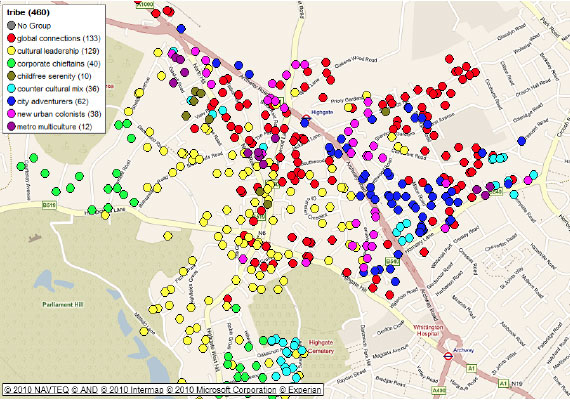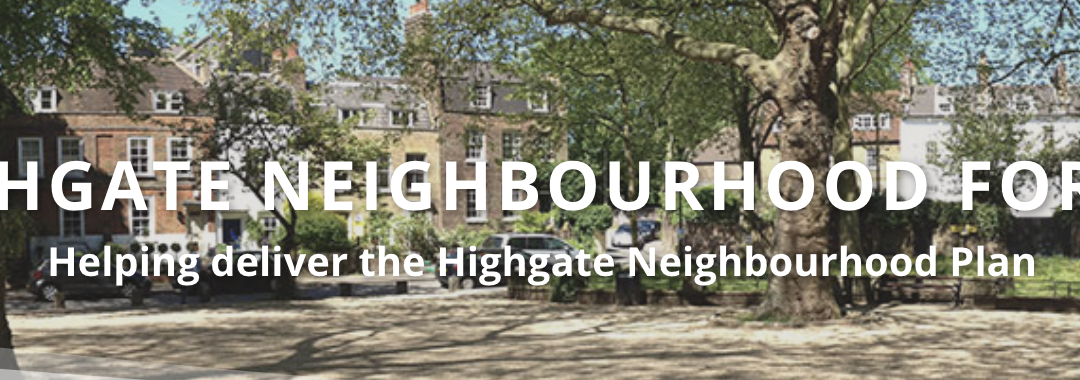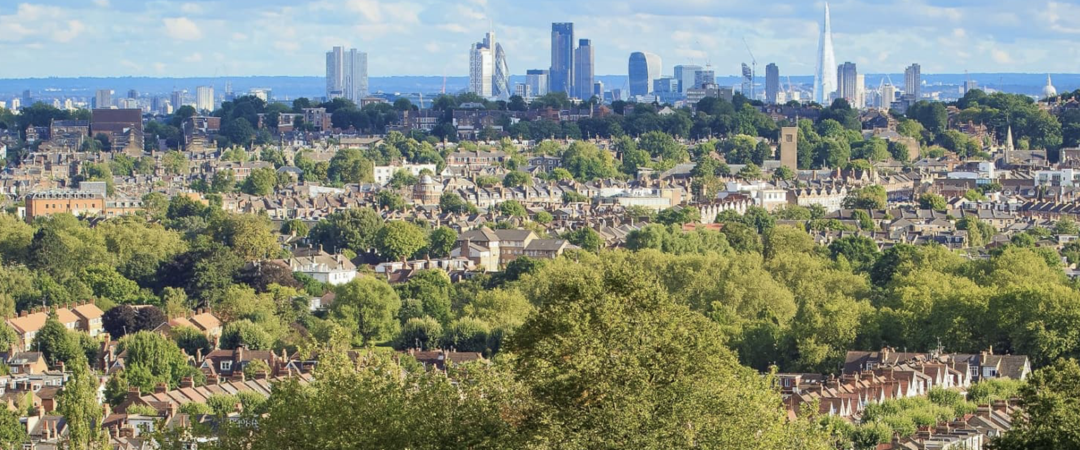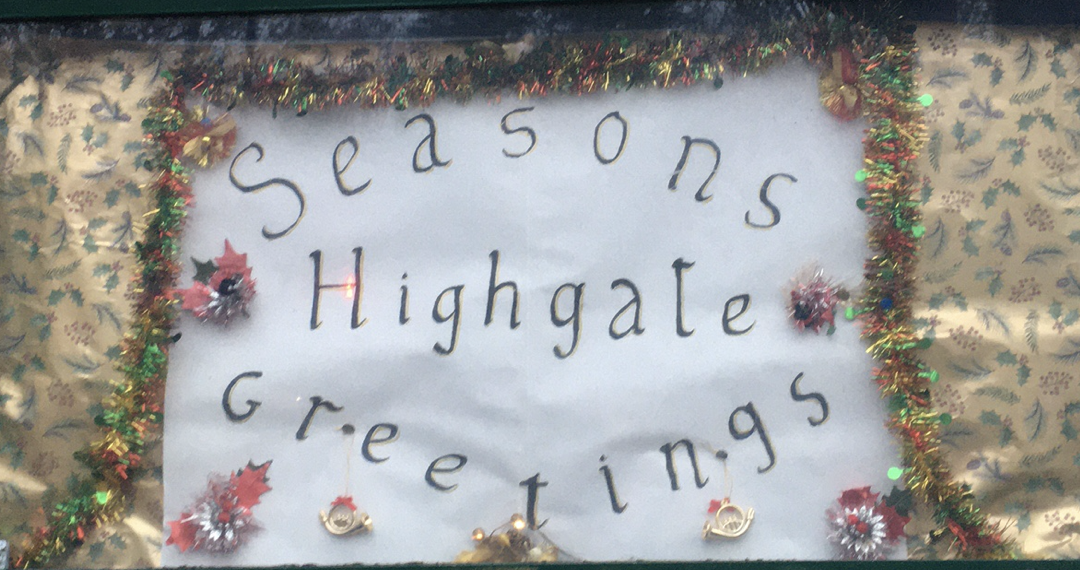Who lives in Highgate?
by Richard Webber and Simon Briscoe
We like to think of a Highgate resident as a special type of person. But business sees N6 rather differently – not as a homogenous community but as a collection of different “tribes”.
Each tribe has subtly different tastes and different ways of spending time and money. When you supply your postal address to a bank, a charity or an internet supplier you probably don’t expect it to use your postcode to infer the type of person you are most likely to be. (By “postcode” we mean N6 4AN, not just N6.)
However, it may be because of your postcode that your bank tried to sell you its foreign currency service rather than a loan, that the election literature you receive features green issues more prominently than education policy and that your insurance premium was priced as it was.
The eight tribes of Highgate
Business, government and charities routinely divide Britain’s 60 million people into 60 or so tribal groups according to the types of neighbourhood in which they live. This enables them to distinguish within Highgate alone eight different types of subtly different consumer. These eight tribes are shown on the map in distinctive colours, together with the labels used to describe them.

Corporate Chieftains (green dots) cluster in Holly Lodge and the roads off Hampstead Lane. This tribe is disproportionately employed in finance, the law and commerce. This is where families with older children live in expensive detached houses set in extensive plots and people drive to work in large cars.
The Cultural Leadership tribe (yellow dots) are more centrally located in Highgate Village. Among this tribe are “the great and the good” who populate influential government committees and have letters published in The Times. They are well-informed, hugely well connected and are seldom short of an opinion on matters of taste and public policy.
The Global Connections tribe (red dots) are younger and perhaps less affluent. They trail cases across the Archway Road sporting an airport tag from the business, study or vacation trip they are just returning from. It is they who make London such a vibrant international city.
New Urban Colonists (pink dots) form London’s liberal intelligentsia. Attracted to diversity, they are happy to bring up children in high-density streets of terraced houses overrun with books. These neighbourhoods are characterised by very well-educated wives.
City Adventurers (dark blue dots), are concentrated around “The Miltons”, where small, self-contained flats have been carved out of large terraced houses. Here, well-educated Time Out readers will be planning a move to a street of “New Urban Colonists” when ready to start a family.
The Counter-cultural Mix tribe (light blue dots) live along the Archway Road and in the flats in Holly Lodge Estate. These areas attract less well-off residents, many of them social “outsiders” sharing small rented flats on a temporary basis.
The Child-free Serenity tribe (olive dots) is found in the Kenwood Estate at the foot of North Hill. The small 1920s terraced houses built by Hornsey Council aren’t suitable for families and now tend to be occupied by young singles, childless couples and empty nesters.
The Metro Multi-culture tribe (purple dots) are found in high-rise council flats, such as those at the top of North Hill. They contain minority communities, which are more numerous elsewhere in London than in Highgate.
Differing attitudes to Highgate
Just as these tribes differ in their attitudes to goods and services, they almost certainly differ in their attitude to Highgate.
Many people in the green dots live in Highgate because it offers the type of house they want to live in. People in the yellow dots like the idea of belonging to a village community.
The attraction of the purple streets is to live among neighbours with a similar education and liberal attitudes. Such people are also highly supportive of campaigns such as the ones to save the Whittington and Athlone House.
For residents in the blue and red neighbourhoods, it’s at the weekend that they value Highgate and its eateries and open spaces.
Do any of these types describe you?
Probably not, you will say. When asked, most people say these classifications are more accurate as descriptions of their neighbours than of themselves.

2021 update on CIL spending
The Covid Pandemic has had an impact on Community Infrastructure Levy (CIL) spending in both Haringey and Camden and will do so for some time to come. In Haringey, they have decided to postpone consulting on Round 2 Neighbourhood CIL projects until 2022. This is...

Our response to the Haringey Local Plan consultation
Highgate Neighbourhood Forum response to Haringey Local Plan Consultation January 2021 The Highgate Neighbourhood Forum welcomes the opportunity to comment on the new Local Plan for Haringey and looks forward to working with the Council to deliver improvements in the...

Christmas Celebrations in Highgate: December 2020 newsletter
It's going to be a strange Christmas this year but Highgate organisations are pulling out all the stops to keep the show on the road. The Highgate Society have organised the Highgate and Muswell Hill Brass Band to play to accompany some late night Christmas shopping...
Highgate needs YOU
The Forum is made up of people like you who care about making Highgate a better place to live and work. Come join us!
Email us at info@forhighgate.org
FOLLOW US
